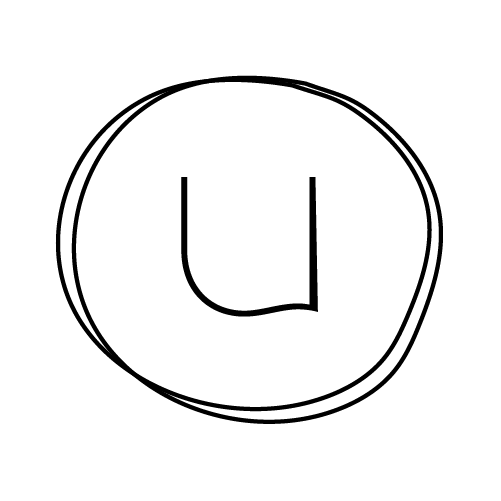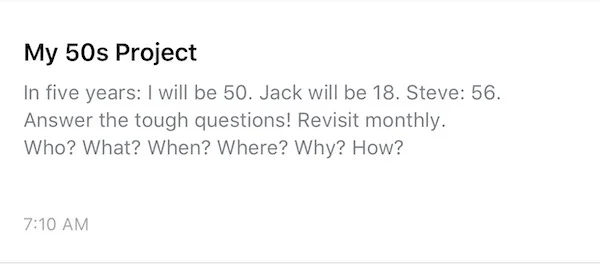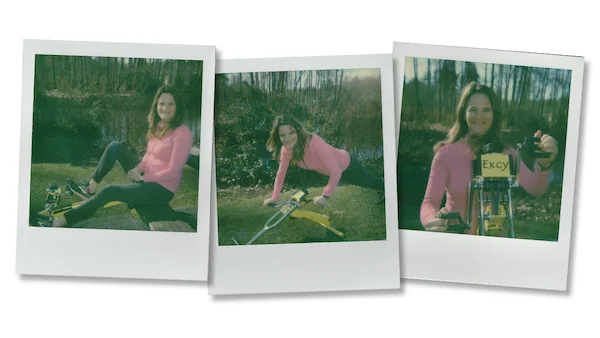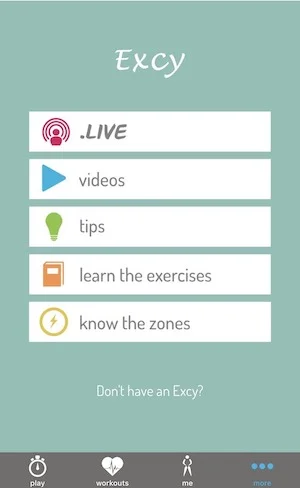Michele Mehl: The Master of Startup Content Strategy
Michele Mehl, Founder and CEO of Excy
Ms. Mehl on...
Why she walked away from raising a million dollar seed round to focus on an intentional, steady growth trajectory
How to out-scrappy the competition and be more real with video—which led to nearly all Excy sales
Where to push content, and the tools to do it, to increase traffic, sales and brand loyalty
What 3 things help most for early-stage startup survival
Underwire: First off, tell us about Excy.
Michele Mehl: Excy is a multi-tasking portable exercise bike for anywhere cardio, strength training, and full body physical therapy cycling. We turn typical sedentary moments like watching TV, conference calls, reading a book, kid’s sport sidelines, and even time in bed, into opportunities to exercise.
Our customers tend to be active Baby Boomers and busy office workers with age-related injuries, disabilities, and health conditions, but also the rehab professionals who serve them.
Since the system folds for easy storage and transport and only weighs 14 pounds, it’s always ready when you are, wherever you go.
We also have a mobile coaching application with content for motivation, including videos from physical therapists.
Your videos are crazy inspiring, we’ll get to those later. Let’s start with what first attracted me to your story — the shift you made last year to an intentional growth strategy. You absolutely intend to grow a billion-dollar company, but it’s going to be on your terms. Go there. Please ;-)
For over 20 years, I have worked with or for venture-funded technology startups. I have seen the demands of raising capital. I’ve experienced the pace required to build a billion-dollar brand.
I’ve also been there as a friend and as a consultant in supporting entrepreneurs on their journeys to go from “obscurity to ubiquity,” a phrase used by Maveron founder Dan Levitan, who I had the privilege to learn from while running my previous company, Buzz Builders.
I have lived my entire life and career with a “go big or go home” mentality. There’s no doubt in my mind that we are sitting on a billion-dollar idea at Excy, but I have learned over my career that there is a lot more money out there than there are great entrepreneurs and big ideas.
So, I first set out to hit certain milestones to prove that our strategy would reasonably work in building a radically inclusive fitness brand that focused on including millions of people neglected and marginalized by the traditional fitness industry. Also, I wanted to prove to myself that I could be a good CEO of a hardware/software company. I felt like I had to prove it to myself first because I’ve never asked anyone for money in my life and I take it very seriously.
We initially spent 100% of our time building a minimum viable product, and then a promising product. We then designed our Kickstarter campaign to be intentionally small and learned everything we could about the people buying our product.
I worked full-time to fund the bootstrapping of the business, even bartering marketing services along the way to help Excy grow to reach certain milestones.
In September 2017, I went full-time on Excy. Once again, I was focused on hitting milestones with an intentional growth strategy but seeing if I could make it go faster by being all in, which would help make us a more attractive outside capital investment.
For the first three months, I had small panic attacks because I’ve always had a consistent paycheck. It absolutely freaked me out. All self-induced stress vs. coming from my husband, but I felt irresponsible, until it started working.
By February 2018, I felt really good about the milestones and started the process to raise a million dollar seed round to put us on a path for rapid investment and growth. It took me all of March and April to fully prepare.
So much work goes into preparing to raise money, from creating your forecasts, to your narrative, to your deck, to securing meetings, to travel, to follow up and more. It is more than a full-time job.
During this process, our sales volume went down because I didn’t hire someone to backfill me while I focused on the full-time job of raising money.
The impact of life (and death)
About seven meetings into the fundraising process, my brother Ronnie passed away unexpectedly. I took time off to attend the funeral and to do some self-reflecting and decided that 200 meetings with customers and prospects would help our business more than spending time raising money.
So, I spent the summer focused on meeting with customers and prospects and working with Mike Rector, our co-founder, to build our next product.
Getting Stanford Health Care as a customer was one happy result of this decision, as was the filing of our second patent for our new XCR 300 product. Sales started rebounding slowly.
From another angle, when my brother passed away, I had just turned 45. My former business partner sat me down and reminded me that in five short years, I would be 50 and my son would be 18. She challenged me to look at what I was trying to accomplish from a new lens; one that I would be tremendously proud of when I turn 50 and send my son off to college.
I sat down and jotted down responses to Who, What, Where, Why, and How. This has been my go-to methodology for creating corporate communications strategies for almost 25 years. This helped bring clarity in recognizing the power and limitations of time.
A note from Michele’s “50s Project” file.
After all that, what changed during this experience was that I no longer felt the self-imposed pressure to “go big or go home,” or that securing venture capital and growing a billion-dollar brand is the definition of success.
Don’t get me wrong, I have all intentions of building Excy into an amazing company and household brand, but I now find myself looking closely at brands like Tuft & Needle, MVMT and entrepreneurs like Rand Fishkin for an alternative blueprint for building a fast-growing company without VC.
You made a mindset shift to prioritize how you spend your time, especially with your family. You can still build a great company, but it requires you to re-think prioritization.
Shifting your mindset to time helps you understand what is realistically possible. To me, building a VC-scale business is a consistent commitment to 70+ hours a week to deliver the expected hyper growth (not including travel). I consistently put 70-hour workweeks in the first 10+ years of my career.
Now, I focus on what is possible with a 45 to 50-hour workweek, with the occasional need to go higher and to travel. There are a lot of people with super powers and a lot of support systems in place who can pull this off (a spouse who doesn’t work, grandparents, nanny, third-party services, etc.). My dad recently retired (my mom still works) and he helps out when I travel, but they don’t live close enough for spontaneous help.
At first, I felt like a failure for admitting that I just can’t do it and be the mom, wife, daughter, sister, friend, mentor, and even neighbor, that I want to be. I still fail at these things (typically many of them at the same time), which those who are close to me would tell you because I’m slammed, but I’m highly aware and working on it.
Also, I’m starting to plan on hiring the right team and getting the right investors who are on the same wavelength in establishing a realistic growth trajectory of our business.
What tradeoffs has this shift required of you?
It requires execution and not getting out in front of your skis. It also requires eliminating things that are not moving the business forward.
The smartest decision we’ve made so far is focusing on hardware first and nailing the design and usability. I was in a position to bootstrap the company through this point by working, using savings, sales, and good old sweat equity.
The second best decision was working hard to understand our customers' motives and barriers so that we can also design content that inspires for incremental behavior change. That brings results without asking for complete behavior modification.
Lastly, having a realistic growth trajectory and being very intentional in our growth requires a sustainable and creative marketing budget, realistic customer acquisition costs, and reinvesting the profits in the business to grow faster.
To determine marketing spend, I use revenue and profit-growth expectations to determine how much to spend. Business 101 stuff.
I’m a planner. I had a 5-year plan out of college. And then a 10-year plan. I’m ridiculously structured, sometimes to a fault, but there’s always a master plan. Getting caught up in the idea that building a VC-scale company was the definition of success was a total distraction from our intentional growth strategy.
We can continue to fund with revenue and profits but consider fueling with a smaller strategic investment. Cash is king after all, and while there is always a cost of bringing in outside money. The costs are different (also stressful) for alternative paths to VC. I am weighing those now.
You have a deep background in marketing and PR. How did you approach the marketing for Excy without the size of budget you were used to working with?
From the beginning I knew we could not compete with large consumer tech fitness marketing budgets and big, infomercial activity. Also, if I look at what traditional exercise companies do, it’s not fresh. It’s not new content to give people ideas and motivation.
So, my strategy has been to out scrappy them with content marketing that includes social, video, live streaming, and sharing customer testimonials.
I can compete on just going faster with authentic content, which means there’s no pressure to do things perfect. My customer base doesn’t feel perfect. I’m sure as hell not perfect. There is a craving for real people.
It was really hard for me to do video. I sat on it for a year. My entire career has been behind the scenes, so putting myself out there was very challenging.
When we did our Kickstarter, we had a great product with a well-built mobile app, but the future is in the content and being able to support and motivate people and make them feel a part of something. We started with six professional videos. I bartered, and in exchange I gave them PR services. Those early videos continue to be our most popular. Look at "Arm Candy," our most popular to date.
Excy’s most popular video. Watch it here.
Content strategy
So that six-video package launched your video empire. You are a video-producing machine, you must have over 100 videos, and you’re doing live streams. Talk about authentic—you are the brand and peddling-proof of the impact of your product. Video is the cornerstone of your strategy. What fueled that strategy?
My strategy with video is multi-faceted. First, I want to inspire our customer base to understand the power of what they bought and to put it to work. We didn’t build this device to be another dust collecting piece of exercise equipment. I feel like me rolling out of bed at 6:00 a.m. with no make-up or busting out a random workout outside on the go on demonstrates what’s possible.
Second, I want to extend our SEO footprint to increase traffic and decrease our customer acquisition costs. Google Search is our number one driver of traffic and sales. I put all our live videos to work on Facebook, YouTube and then push snippets to our website, email list, Twitter and Instagram.
Finally, with our paid professional videos, I want to showcase third-party credibility, teach customers how to properly use our device, and also capture that we are a professional company.
We put a very small amount of money into boosting Facebook Live videos on occasion for a decent ROI. I then do everything I can across all our channels to extend the longtail value of all the live content.
We haven’t paid for any YouTube subscribers or views and we’re well over 100,000 views organically. I do Facebook Live, YouTube Live and we capture the streams to our website. We use the top-level domain .LIVE (www.excy.live) to create a branded experience around our live content and to make it easy for our fans and customers to see what we are up to and to dive in to our vast library of content. We also make all the content easily discoverable in our mobile apps.
Excy’s Live page.
A lot of our customers are not on Facebook so we have to reach them where they are, including when they search the Web with a very specific exercise problem that we can help with. With video, they can easily determine if they can see themselves using our device.
Content production
What equipment do you use?
I have two iPhone 8 Plus smartphones, plus an iPad. I have a couple of tripod stands and use cases from Iographer to hold the phones. We recently started using Switcher Studio as our streaming platform to help brand our live streaming experience.
One of the challenges is that people don’t know we have a mobile-coaching app. Switcher Studio allows me to dual-screen and I can feature the mobile coaching app in action as my coach through all my workouts.
I do monthly challenges that customers can follow along with. Or I’m somewhere and I just go for it and pull out the Excy.
I love the video of you in New York across the bay from the Statue of Liberty. I felt like I was there with you, pals strolling the promenade. Oh hey girl, let’s get in some upper arm work while we marvel at this glorious representation of America at its most industrious. Does it come easy for you to do these videos?
At first, I was shy and embarrassed. Not because I was using Excy, but because of the setup with a tripod and talking to the camera as people were walking by. I’d find a quiet place. Now I don’t care. Well, maybe a little with looking like I am talking to myself, but now I just wave at people and answer their questions while on camera.
In my personal life, I have no problems riding Excy anywhere, including the sideline of my kid’s sports functions. Or in the airport. Wherever. I did have one man recently take a video of my using Excy on the sideline and he sent it to his wife. Her first reaction was “Great, an in-shape woman getting more in shape.” It can be hard to constantly remind people of my story and how I live with an injury, so this is why we also place a lot of emphasis on sharing customer stories.
Prior to Excy, maybe I took three selfies in my whole life. I was the mom who was never in the picture. I’d crop my head out. There was always something wrong with my body that I wasn’t happy with. I was that person. I’m not a photogenic person. When I have my photo taken it’s a struggle. It’s uncomfortable for me.
But now I’m more in touch with myself. My son will have more pictures of us because I give fewer fucks.
By the way, the Excy videos are also my workout. Those challenge videos are my real workouts. Or I workout while watching TV. I do weekend warrior stuff (skiing, biking), but I do Excy for 20 minutes, five to six days a week. And I go hard.
How have the videos contributed to sales?
I think the strategy led to nearly all our sales, including securing a relationship with Stanford Health Care. It also helps minimize returns. We’ve only had five returns. People understand how to use our system. As I mentioned earlier, it’s also helped with our SEO footprint.
I will say, I can’t watch the videos. It’s too hard for me.
Michele in action.
Well, please know that your videos are incredibly inspiring. They make me want to buy an Excy and get me some abs like yours. Damn, you can plank AND ride that freaking thing at the same time. I wanna see you Excying, in a plank, while Jeff Bezos meditates on your back. Ommmm...
I love Amazon and Jeff Bezos, but lately, I just keep envisioning him naked with all this dick pic stuff, so you just freaked me out.
I consistently hear from our customers that these live videos inspire them, so it’s why I keep doing them. I’ll be 46 next month. I’m working harder than ever and I’m close to being in the best shape of my life by mostly exercising and multi-tasking when I would otherwise be sedentary.
My next goal is to leverage video even more to drive engagement and extend our footprint since fewer people are paying attention to social media.
Sounds expensive. I know you’re thrifty and crafty with your spend. How is all this possible?
We recently kicked off a new effort called HealthYeah by Excy. It’s a risk to introduce another brand, but we are using it to build out more expert content in a very authentic way (everything is live). The goal is to inspire people, but also drive email signups, engagement, and a great SEO footprint. We are three interviews into it and I am beyond happy, so I booked us out through June.
We will continue to pay our professional videographer to capture video, but also barter for videos, too. For example, I don’t pay our physical therapists to do videos. They do it because they believe in what we are doing, so I give them an Excy for their clinic to work with patients. We will also continue to do live workouts, less than before, but still keep building the library.
Bartering and trade—that’s such a startup theme. You have to get really good at asking for help. Since video is so important to your marketing and product experience, talk about how you integrate it into the app.
The mobile piece is interesting. All videos are integrated into the mobile coaching app under our “more” tab. “Live” takes people to live workouts and training. “Videos” takes people to physical therapy instructions. “Learn the exercises” takes them to setup and tutorials. That helps the customers have a good experience within the mobile app and since everything is also multi-channel, we use the same content to create an SEO footprint.
The Excy app.
When you’re an ecommerce company that’s both mobile and hardware, it’s a lot of products to manage. Social is a product, too. We are absolutely a content company.
From the beginning I wanted the hardware right. Then deliver the content. Over time it will be specific to injury and disease. There is a subscription model to be had in the mobile app. Peloton is spending tons of money doing this. They’ve closed almost $1 billion in funding. With my growth strategy, we will partner on the subscription front for the backend but drive the content ourselves with customers and experts.
Steady focus on sales, plow more into content marketing as you have the revenue—but you are profitable now, right?
We ebb and flow depending where we are in the inventory process. When we place an inventory order, which we just did, we’re not profitable until we start selling. Also, since I’m not paying myself, I technically don’t think you can consider yourself profitable until you’re paying yourself a salary. But we’ve made money every month since we launched. That’s hard to do.
There have been temptations to add sensors, or speed up my vision for the mobile app. We have to stay focused. It’s always tempting to do more. Our customers aren’t demanding it. Since I’m bootstrapping, I have time to listen to my customers.
Direct-to-consumer as a startup
Any lessons from your travels in direct-to-consumer land?
If I look at Peloton taking close to a billion dollars, or Mirror taking in $40 million-plus, it can be very easy to be demotivated knowing that D2C is extremely expensive. We are choosing to swim in blue waters ignored by the shark invested fitness market.
We’ve been able to work with health systems and physical therapists rather than celebrities. Another part of our strategy has been to build authentic relationships with opinion leaders who are our customers and have high credibility. That gives our core audience a level of confidence.
My photographer managed to talk me into one photo with a sports bra while planking. I prefer to just capture real life moments where fitness is possible without the production of perfection. It’s a very different strategy than other exercise companies.
I also don’t want Excy to be a fad. There is a tsunami of age-related issues. Exercise is a giant component of that. We can make a contribution to the long-term care of baby boomers and people battling diseases, including many preventable diseases. Now we have the device in place. We have a second product. We have two patents. We will change the nature of how people will take care of themselves.
If I had taken on money our mobile app strategy would’ve been different. We would’ve had to have subscription-based content already before I knew the customer.
Growth trajectory
Final question, who or what has impacted your trajectory the most?
Wanting to be there for my son as he pursues his own dreams and not wanting to miss it. My husband has a very demanding job and travels a lot. It’s hard for both parents to burn the candle from both ends, especially without extended family nearby readily available to help. In close coordination with my husband and my co-founder, we have crafted a realistic growth trajectory that allows my husband and I to raise a busy teenager.
Startup survival tips
Michele’s advice:
Be willing to get outside your comfort zone. Prior to starting Excy, I spent my career behind the scenes. Now, I am doing live training sessions. It’s so awkward, but it helps our business.
Avoid the peaks and valleys. The peaks are high and the valleys are low and lonely. The best way to avoid this is purposeful activity that drives the business. When you find yourself being inactive, do something, anything productive to keep motivated. Even better if it’s time on high-yielding sales efforts.
Don’t get caught only doing the things you are good at. This goes back to the first one of getting outside your comfort zone. Example, I am a better marketer than I am a sales person. But marketing alone doesn’t move the needle. You have to focus and do the things you aren’t as good at too. Or, hire people to help.






